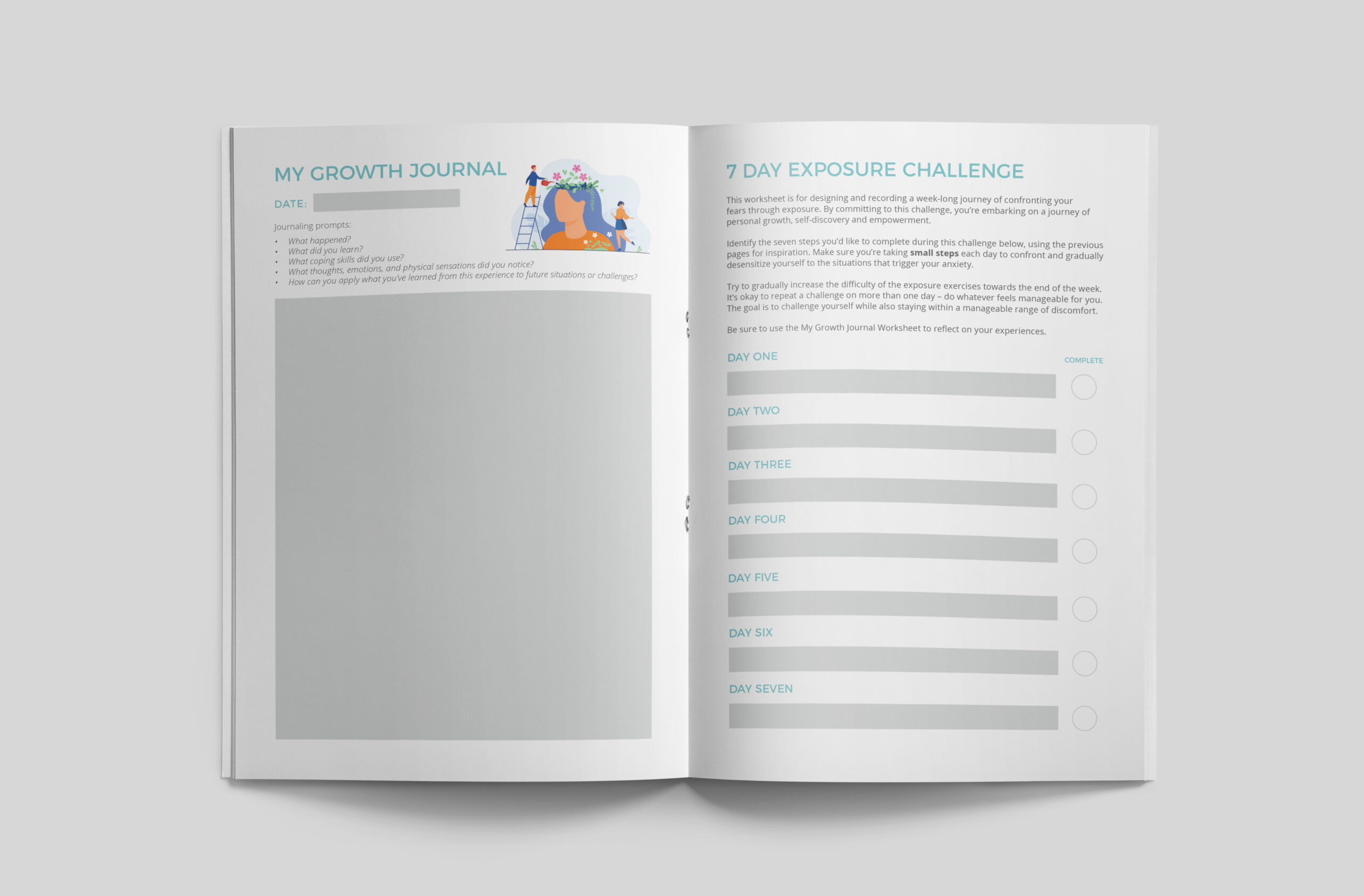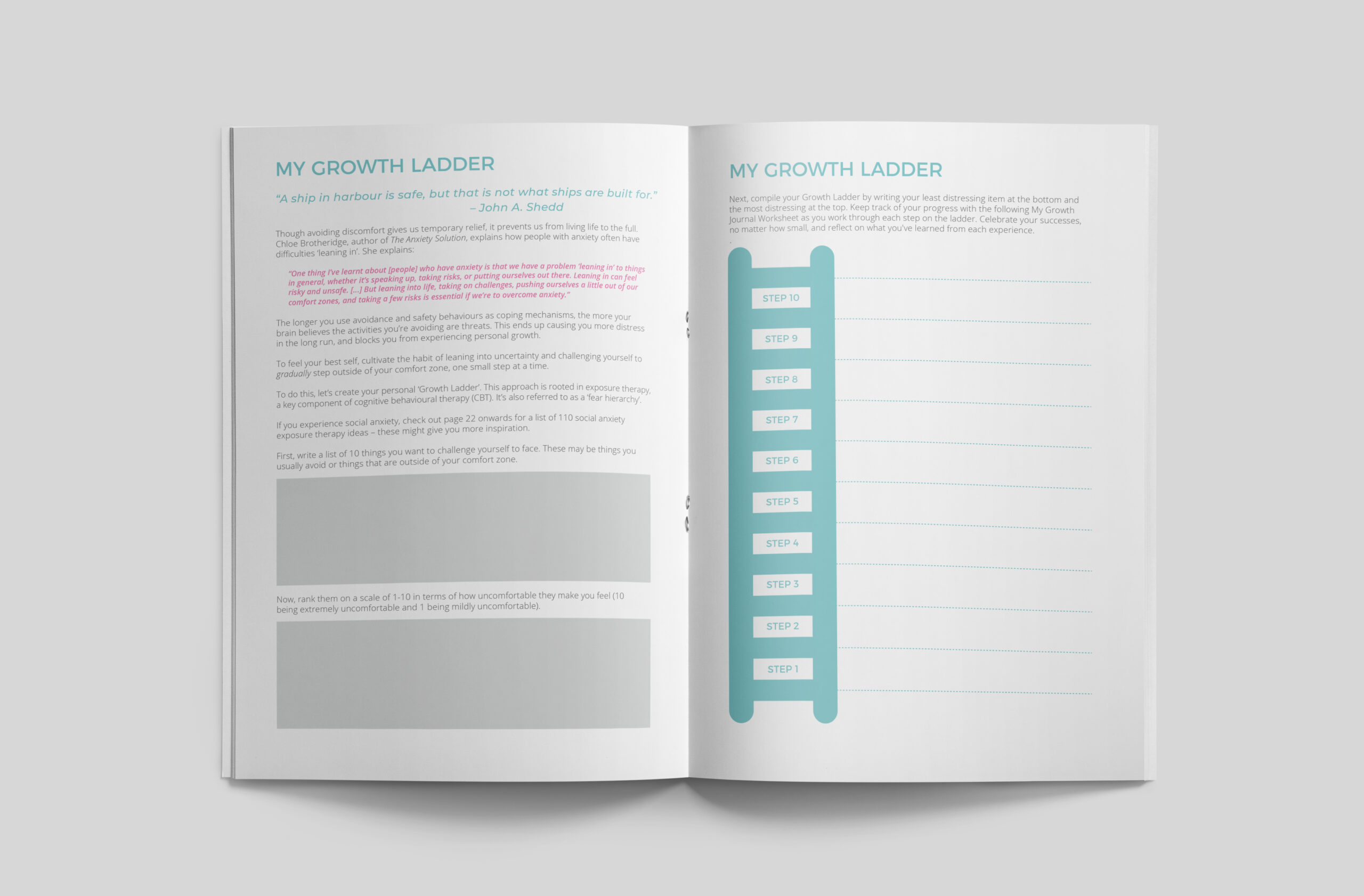Exposure therapy is one of the most effective evidence-based treatments for anxiety, helping millions of people worldwide.
In this guide, we'll delve into what exposure therapy is, provide tips to enhance its effectiveness, and address common troubleshooting issues.
What Is Exposure Therapy for Social Anxiety?
At the heart of social anxiety lies avoidance – the tendency to steer clear of situations that provoke anxiety. Exposure therapy tackles this avoidance directly, aiming to desensitize you to your fears by gradually exposing you to what you’re afraid of.
It’s scary. But that’s the point.
This approach is a key element of cognitive-behavioural therapy (CBT), considered one of the most effective forms of psychotherapy available.
Exposure techniques can take various forms depending on the nature of your struggles:
- In vivo exposure involves directly confronting feared stimuli or situations in real life.
- Imaginal exposure involves vividly imagining feared scenarios.
- Virtual reality exposure (VRE) is a new approach using technology to simulate anxiety-provoking situations in a safe and controlled environment.
How Does It Work?
While the exact mechanisms of exposure therapy remain a subject of debate, it's widely believed to relate to inhibitory learning. This concept suggests that exposure induces new learning that competes with and weakens existing fear responses.
Through exposure, you acquire new information and experiences that contradict your existing fear associations. This new learning gradually replaces or inhibits the old fear responses, leading to a reduction in anxiety.
5 Ways to Make Exposure Therapy More Effective
1. Build a Solid Foundation
Starting exposure without a deep understanding of what anxiety is and how to manage it is a bit like entering a bodybuilding competition with no knowledge of weightlifting and no muscles!
Without this foundation, you might struggle to bear the weight of anxiety-provoking situations.
There’s mental anxiety and physical anxiety, and different methods are needed for addressing each.
Want a free deep dive into anxiety? Download our CBT-based guide by filling in the form below. It’s a quick, easy read – about an hour.
2. Embrace Self-Reflection
Self-reflection is important in three ways: connecting to your values, exploring root causes, and integrating your exposure experiences.
Connecting to Your Values
Before diving into exposure therapy, take the time to connect with the deeper reasons driving your decision to confront your fears.
What are your values?
How does reducing social anxiety align with those values?
Do you value...
- Connection?
- Personal growth?
- Courage?
- Adventure?
- Resilience?
- Self-acceptance?
- Authenticity?
By anchoring yourself in your values, you cultivate a sense of purpose that fuels your commitment to the exposure process. Remind yourself of your values when you encounter inevitable challenges and setbacks. Here’s a free tool for uncovering your values.
Exploring Root Causes
Another element of self-reflection is exploring the origins and underlying triggers of your social anxiety. What are you afraid of exactly? What specific situations evoke the strongest feelings of discomfort? Where do your fears likely stem from?
Once you've identified your core beliefs, you can work on reframing unhelpful thinking patterns that fuel your social anxiety.
If your social discomfort stems from past traumatic experiences, exploring this through self-help and therapy can also facilitate healing.
Importantly, exploring root causes of social anxiety helps cultivate self-compassion and understanding.
Integrating Your Exposure Experiences
After engaging in exposure exercises, it’s important to take the time to reflect on your experiences with curiosity and compassion.
- What did you learn?
- What thoughts, emotions, and physical sensations did you notice?
- What coping skills did you use?
Reflecting on your experiences allows you to gain valuable insights that drive personal growth.
3. Focus on Small Steps
When creating your exposure plan, focus on small, manageable steps and gradually increase the challenge.
Why is this so important?
Taking small steps creates numerous opportunities for positive reinforcement.
Each time you confront a feared situation and manage your anxiety effectively, you experience a sense of accomplishment and pride. These moments of success serve as powerful rewards for your brain, strengthening the neural pathways associated with adaptive coping and resilience.
Small steps also allow you to effectively gauge your window of tolerance – the optimal zone of arousal where you can effectively cope with stressors and regulate your emotions. Outside your window of tolerance, you experience:
- Hyperarousal – overwhelm, agitation, panic
- Hypoarousal – numbness, dissociation, shutdown
If you notice yourself in these states, pause the exposure exercise and focus on your coping skills. Then, take even smaller steps. Baby steps. Dial down the challenge.
Social Anxiety Exposure Ideas
Remember to align exposure exercises with your values. What would be an exciting goal for you? Set ambitious yet achievable targets that push you outside your comfort zone.
Here are some ideas:
- Phone a local business and ask them a question (e.g., “what time do you close today?”)
- Say “good morning” to a neighbour
- Buy an item of clothing and return it the next day
- Ask a stranger to take a photo of you in a public place
- Host a games night or dinner party
- Go and donate some items to a local charity shop
- Eat at a restaurant alone
- Ask a server at a restaurant how their day is going
- Go to a local bookstore and ask a staff member for a book recommendation based on something you’ve enjoyed
- Attend a virtual Meetup
Exposure Therapy Worksheets
For a huge list of 110 Social Anxiety Exposure Ideas, check out The GROW Planner in The Mental Wellbeing Toolkit.
Worksheets include:
- My Growth Ladder. A worksheet to record your exposure therapy plan, mapping steps onto a ‘growth ladder’.
- My Growth Journal. A worksheet to keep track of your experiences and progress, helping you engage in effective self-reflection.
- 7 Day Exposure Challenge. Review the 110 social anxiety exposure ideas and create your own week-long challenge.
- 4 Week Exposure Challenge. A worksheet which gamifies the whole exposure therapy experience – you assign 1, 2, or 3 points for easy/medium/difficult challenges and strive to beat last week’s score!
4. Strive for Habituation
Habituation is a psychological process through which a person’s response to a repeated stimulus decreases over time.
Imagine you're in a noisy place, like a busy café. At first, the background noise might be quite noticeable and distracting, but as you spend more time there, you gradually become habituated to the background noise.
The same happens in exposure therapy. The longer you face your fear, the more your body gets used to it, and the more you calm down.
So, try to avoid leaving the feared situation before you notice your fear response reducing. Doing so helps rewire your brain's response to the feared stimulus, leading to a reduction in anxiety over time.
5. Repeat, Repeat, Repeat
Persistence is key. Stick to your exposure plan and adopt a growth mindset during setbacks.
Also, embrace spontaneous opportunities for exposure to accelerate your progress. Whether it's striking up a conversation with a co-worker, attending a social event, or speaking up in a group setting, embracing spontaneity allows you to reinforce exposure principles and gain valuable real-world experience.
Exposure Therapy Troubleshooting
Not seeing the progress you hoped for? Consider the following:
Manage Your Expectations
I need to get rid of anxiety. Sound familiar? Read this article.
Acknowledge that change may be gradual, and setbacks are a natural part of the therapeutic process.
Recognise that progress can come in many forms, such as improved coping skills, being consistent, or a reduction in safety behaviours. Remember, self-reflection is key!
Cultivate patience. Trust in the process. By maintaining a positive attitude and persevering, you’ll continue to make meaningful strides towards reducing social anxiety.
Psychoeducation and Shifting Your Mindset
Sometimes, lack of progress in exposure therapy stems from the underlying cognitive patterns that perpetuate social anxiety. Spend more time addressing these through techniques such as journaling, enhancing your mindfulness skills, cognitive restructuring, and reading.
Here are some books social anxiety sufferers have reported finding helpful:
- Overcoming Social Anxiety and Shyness by Gillian Butler
- Healing the Shame That Binds You by John Bradshaw
- Not Nice by Dr. Aziz Gazipura
- The Subtle Art of Not Giving a F*ck by Mark Manson
Address Safety Behaviours
Safety behaviours are coping strategies that people use to reduce anxiety. While these behaviours may provide temporary relief, they ultimately reinforce social anxiety and hinder your progress in exposure therapy.
Identify and reduce safety behaviours that you may be using, such as avoiding eye contact, using alcohol to cope with social situations, or rehearsing conversations in your head.
By gradually reducing your reliance on these behaviours, you can increase your exposure to anxiety-provoking situations and speed up your progress.
Vary Your Exposure Experiences
Lack of progress may also stem from a lack of variety in exposure experiences. If exposure exercises feel too repetitive or predictable, consider introducing greater variation in the types of situations you expose yourself to.
Summary
Exposure therapy is a widely favoured method for reducing social anxiety. When considering this approach, keep these things in mind:
- Build a solid foundation. First, develop a deep understanding of anxiety, and explore coping skills to help you cope with it in the moment.
- Embrace self-reflection. What are your values? What are the root causes of your anxiety? What have you learned from your exposure experiences?
- Focus on small steps. Small steps provide regular positive reinforcement and protect you from stepping outside your window of tolerance.
- Strive for habituation. Stay in the feared situation long enough for your anxiety to start decreasing.
- Repeat, repeat, repeat. Commit to the process and remind yourself of your values and exciting goals when you encounter setbacks.
Want a step-by-step program for taking control of your mental health? Check out The Mental Wellbeing Toolkit – The GROW Planner contains several worksheets for exposure therapy.
Need more support? While self-guided exposure can be empowering, seeking therapy often enhances your mental health journey. Therapists trained in exposure techniques can offer guidance, support, and tailored strategies for navigating the complexities of social anxiety.
Be kind to yourself as you embark on the brave mission of facing your fears. You've got this!





